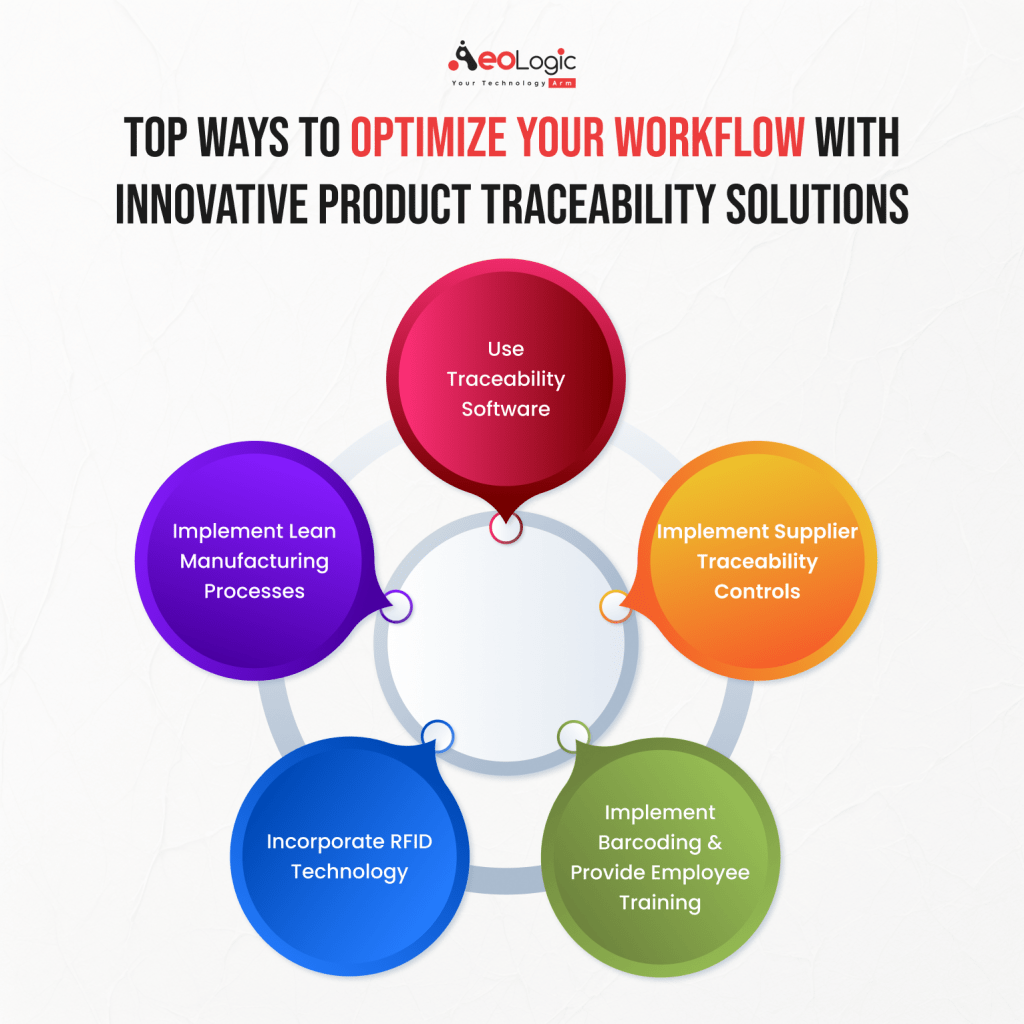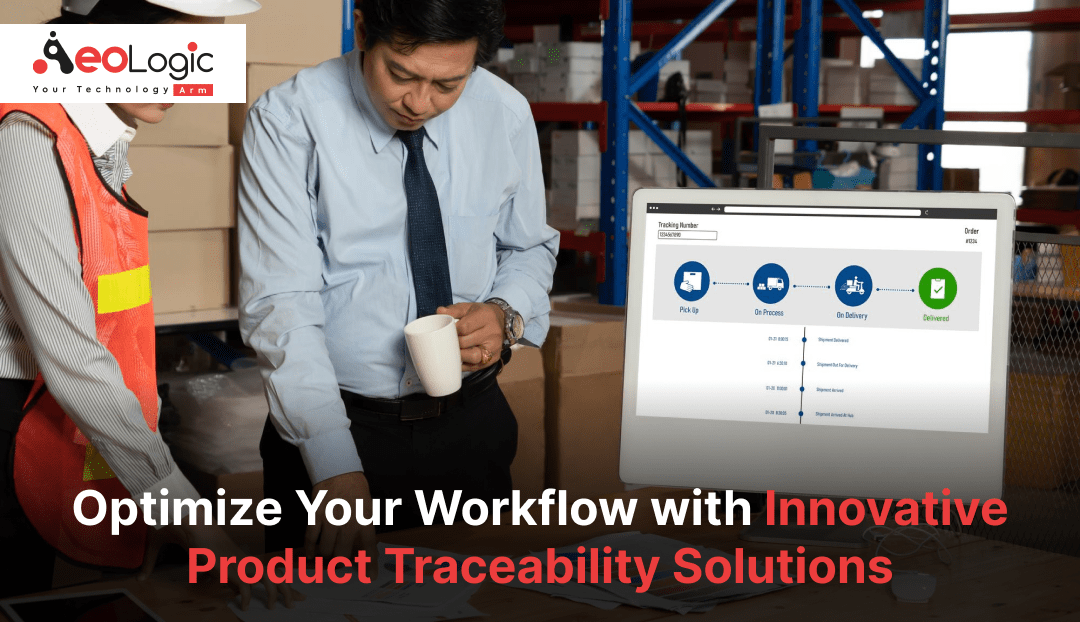Workflow is an essential aspect in any industry as it shows how consistent and sequential your business supply chain consists of. This aspect plays a big role in developing an industry or a business. Having a consistent workflow could prevent the business from growing beyond the limit and this is not enough in this competitive world. In general, a workflow is a method for organizing and controlling actions and procedures that are repeated in a specific order. They are the means by which individuals and organizations carry out their tasks, be they producing goods or services, handling data, or engaging in any other value-adding activity.
Now, many technologies have been integrated into businesses or industries to make things easier, more convenient, and more developed than ever. Workflow can also be smoother than ever with a certain technology or tool. Traceability can be the technology that can affect the workflow inside an industry in positive ways.
Innovative product traceability solutions have made a deep impact on the world’s various industries and established a global market size. The global track and trace solution market was valued at USD 6.42 billion in 2023. The market is projected to be worth USD 7.50 billion in 2024 and reach USD 26.35 billion by 2032, exhibiting a CAGR of 17.0% during the forecast period (2024-2032).
Innovative traceability solutions for product tracking can prove beneficial for the industries as they can have data about their products. Any defect or error can be detected immediately and can improve the fault before causing too much damage. Traceability also enables the proper flow of supply chain and inventory management inside an industry.
In this article, we will see how innovative product traceability solutions can improve the workflow inside an industry. We will go through some additional details like benefits , challenges and in the end, we will conclude the whole topic in the conclusion part.
What does Product Traceability Solutions Mean?
In general words, the process of identifying and following a product through a supply chain is known as product traceability. It entails tracking items at every stage and entering manufacturing data into a database. Traceability software can execute into the system and can gather information about the products using RFID tags. So you can say that tags and software both together consist of innovative product traceability solutions. This increases the transparency in the supply chain that does not let any error or mismanagement in the company. Overall this has the ability to improve the workflow inside an organization or industry.
As technology advances and evolves, so does access to innovative product traceability solutions. More and more small and medium-sized multi-channel retailers are incorporating lot and serial traceability into their operations, increasing confidence in quality and transparency. Acctivate tracks and traces raw and finished goods from the moment they arrive at the warehouse, back to suppliers, and all the way to a customer’s warehouse shelves or doorstep.
Keeping precise records of every step an ingredient/component/part or finished commodity takes in the warehouse and after shipment is critical for complying with various federal requirements, assuring quality control, and keeping real-time track of any issues that develop.
Also Read: How Traceability Solutions Are Reshaping Industries In 2024?
Top 6 Ways to Optimize Your Workflow With Innovative Product Traceability Solutions

Look at the top 6 ways to optimize your workflow with innovative product traceability solutions. Dive in to know more:
1. Use Traceability Software
Digitization affects almost every aspect of production, including product traceability. Highly sophisticated traceability software solution is now an inherent element of the process, serving as an online data repository that gathers and combines real-time product or part modifications.
Aside from keeping this information in a readily accessible manner, this software may make it much easier to run reports, conduct analyses, issue recalls, and pinpoint the source of faulty components.
Because each sector has unique product traceability compliance needs, it’s no wonder that there are several software choices on the market geared to certain company verticals.
Food traceability software is one such example, as is aerospace traceability software. We propose doing some study to see if there are any niche-specific options geared to your business. These software solutions work in tandem with product identification and tracking devices like barcode labels and tags to build a system that allows for exact product tracking and traceability.
Also Read: The Importance of Traceability in Manufacturing: An Overview
2. Implement Supplier Traceability Controls
Many manufacturing processes today depend on external suppliers, known as Original Equipment Manufacturers (OEMs), to mill or build particular components for use in finished goods.
The automobile sector is a prime illustration of this: for any particular vehicle, suppliers may build hundreds of auxiliary car parts, which are then marketed, delivered, and fitted at the automaker’s assembly facilities. However, the industry’s catastrophic Takata airbag recall demonstrates why tracing supplier-produced componentry is vital.
The first step in establishing traceability standards with external vendors is data openness. There are numerous methods to achieve this, including batch numbers, certifications of conformity, and production records. Labeling parts with long-lasting product identification tags is one of the most dependable ways to identify and confirm supplier-sourced components.
You can also proactively monitor supplier performance by conducting audits, rigorous quality control checks, and utilizing electronic data interchange communication technology to share key traceability data on a timely basis.
3. Implement Barcoding
Barcoding may be the most basic product traceability solution. A barcode gives a unique identity to each item or batch of parts, which is linked directly to an online database; this might be included in specific traceability software or incorporated into an enterprise asset management or similar system.
Regardless, barcoding enables the database to record each step of the production process in real time. Updating records, certifying task completion, or time-stamping production milestones may easily be accomplished with a brief scan by an autonomous machine or workstation operator, with little impact on production productivity.
And since high-quality asset tags are made of very durable materials, you can rely on them to withstand even the most harsh production circumstances.
4. Incorporate RFID Technology
RFID solutions, like barcode, is a data-sharing solution that connects physical assets and components to digital software and databases.
RFID stands for Radio-Frequency Identification, and it operates by sending data stored on a microchip via radio waves. To gather data from an RFID system, the chip must come into close contact with the scanner, at which point it will be recognized.
There are various advantages of utilizing RFID for track and trace.
For example, many RFID chips may be read at the same time, and chips can be overwritten and reused. RFID technology may also offer smart packaging solutions. However, RFID tags are susceptible to signal interference and possible security risks, and RFID scanners may be too sensitive and mistakenly scan assets through a wall in another room.
Additionally, RFID tag setup must be grid-based in order to triangulate them and scan the relevant asset locations. That is, a scanner may not scan all assets and may provide the last known location of assets that were not located, resulting in a full corruption of the asset management database. For these reasons, barcodes are a more dependable and tested solution in many situations.

5. Implement Lean Manufacturing Processes
Tracing material origins may frequently be made easier by optimizing the whole production process. A prominent example of this is lean manufacturing, which was initially established by Toyota and has since been extensively replicated.
While the product shortages that occurred during the pandemic have prompted concerns about how lean a manufacturing plant should be, there are evident advantages to reducing excess materials and component stocks, notably for tracing.
With fewer raw materials on-site, any recalls or faults may be more readily traced back to individual vendors and batch numbers. Similarly, more precisely scaled output batches may assist quality control teams in better analyzing the fit and finish of finished items.
If there is product concern, lower batch sizes allow for more quick recalls, process changes, and supplier audits. In summary, lean manufacturing makes your company more agile and transparent, which are crucial attributes for monitoring and tracing goods.
6. Provide Employee Training
Those that work on the shop floor are closest to your goods. Compliance with manual tracking operations, such as scanning a barcode or signing a bill of lading, is often the determining factor in the effectiveness of innovative product traceability solutions.
Employees might feel more involved in their roles if they are educated about the objective of traceability from the beginning.
Not only can proactive training increase compliance, but if done correctly, it may also raise general morale and empower people to discover a greater sense of purpose in their jobs.
Also Read our trending blog: Traceability Solutions for Supply Chains with Examples
Final Words
Innovative product traceability solutions have become essential for optimizing workflow in practically all production businesses, including automobiles, food, and pharmaceuticals. To succeed, managers must understand the significance of the materials tracing process and how to optimize their operations for supply chain visibility.
For those looking to embrace these cutting-edge advancements, Aeologic Technologies emerges as a trusted partner, offering expertise and solutions tailored to the evolving landscape of industrial traceability.






